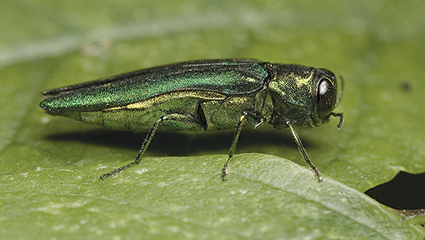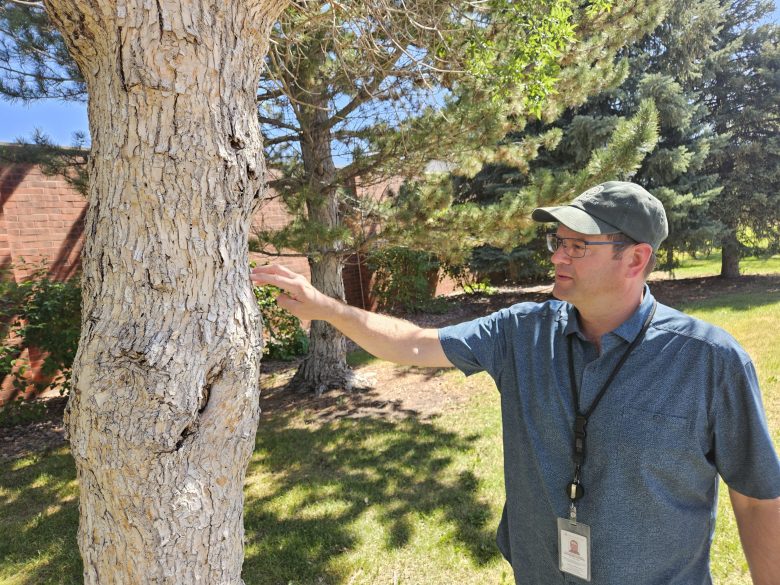City Forester Bryan McCoy is on the frontlines in the battle against the voracious Emerald ash borer, the killer of millions of ash trees and considered the most destructive tree insect pest in North America.
“They move quickly into the ash trees, and they are so aggressive that even healthy trees die within two or four years after being infected,” McCoy said.
Trees may be well into their death throes, but many people don’t realize that the first signs of fatal infections is the thinning of leaves at the very top of the tree, he said.
“Most are only concerned about what’s going on at eye-level of a tree,” McCoy said. “They don’t think to look up.”’
Westminster has about 69,000 ash trees on private property, just part of the 1.2 million in the Denver-metro area. The city has been assessing city-owned ash trees on city property for treatment since 2013, McCoy said.

The city estimates one out of every seven trees in Westminster is an ash.
The city completed a tree inventory in 2023 to identify ash trees in the city’s Right-Of-Way areas, within about 12 feet from the curb into a yard or property. The study found 3,174 ash trees worth preserving.
The city says that ash trees that do not meet the treatment criteria must be removed because the infected ash trees will eventually die. Removing untreated trees early temporarily slows the spread of Emerald ash borers, reduces the risk to tree workers, and can speed up replanting efforts by prioritizing re-planting locations.
The city treated those trees between July and September 2023 using a micro-injection system that put the product directly into the tree trunk, according to the city website.
Untreated trees to be removed
The city does not have enough personnel to remove tainted trees on private property, McCoy said. He urges property owners to use a different species of tree to replace their ash.
“The ash borer only infests that ash tree,” McCoy said. “We really encourage everyone to get a different tree to help stop the spread of the EAB.”
To help pick a new tree, the Colorado Department of Agriculture offers a database of registered nurseries and landscape contractors.
The Emerald ash borer is native to Asia and was introduced into North America sometime during the 1990s, probably via ash wood pallets or wood packing material, according to Colorado State University’s Warner College of Natural Resources.
Since its initial discovery in southeastern Michigan in 2002, the insect has killed millions of ash trees throughout the central and northeastern United States and Canada, according to CSU. An infestation was first detected in Colorado in the City of Boulder in September 2013. Approximately 15 percent of the trees in Colorado’s urban forests are ash, making this insect a major threat to urban forests statewide, says CSU
EAB has spread to other cities and towns on the Front Range and Thornton is the first Colorado city east of I-25 to confirm EAB. The insect was recently detected in Oregon as well, McCoy said.
On a recent afternoon, McCoy walked down a sidewalk behind several businesses near Sheridan Boulevard and found numerous signs of Emerald ash borer infestation. Several round holes penetrated the bark of ash trees, signs that the hungry insect was gorging throughout the tree.
Ash trees are popular because they throw off plenty of shade and are colorful in the fall, McCoy said. If left alone, he added, they can live several decades. “But these (near Sheridan) may not make it much longer,” McCoy said. “It’s sad.”


